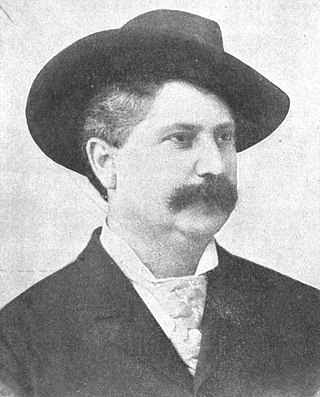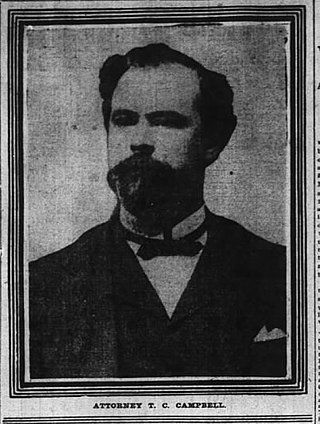Related Research Articles

WSTR-TV, branded on-air as Star 64, is a television station in Cincinnati, Ohio, United States, affiliated with MyNetworkTV. It is owned by Deerfield Media, which maintains a local marketing agreement (LMA) with Sinclair Broadcast Group, owner of dual CBS/CW affiliate WKRC-TV, for the provision of advertising sales and other services. The two stations share studios on Highland Avenue in the Mount Auburn section of Cincinnati; WSTR's transmitter, Star Tower, is located in the city's College Hill neighborhood.
The Western Star was a weekly newspaper published for 206 years, from February 13, 1807, to January 17, 2013. It had been the oldest weekly newspaper in Ohio, second oldest of any sort in Ohio after the daily Chillicothe Gazette, and the oldest paper bearing its original name published west of the Appalachian Mountains until it ceased publication with its January 17, 2013 printed edition. It had been published on Thursdays by Cox Media Group Ohio, the communications company founded by former Ohio Governor James Middleton Cox. Its coverage area was primarily Lebanon and southern Warren County.

The Cincinnati Enquirer is a morning daily newspaper published by Gannett in Cincinnati, Ohio, United States. First published in 1841, the Enquirer is the last remaining daily newspaper in Greater Cincinnati and Northern Kentucky, although the daily Journal-News competes with the Enquirer in the northern suburbs. The Enquirer has the highest circulation of any print publication in the Cincinnati metropolitan area. A daily local edition for Northern Kentucky is published as The Kentucky Enquirer.

The Cincinnati Post was an afternoon daily newspaper published in Cincinnati, Ohio, United States. In Northern Kentucky, it was bundled inside a local edition called The Kentucky Post. The Post was a founding publication and onetime flagship of Scripps-Howard Newspapers, a division of the E. W. Scripps Company. For much of its history, the Post was the most widely read paper in the Cincinnati market. Its readership was concentrated on the West Side of Cincinnati, as well as in Northern Kentucky, where it was considered the newspaper of record. The Post began publishing in 1881 and launched its Northern Kentucky edition in 1890. It acquired The Cincinnati Times-Star in 1958. The Post ceased publication at the end of 2007, after 30 years in a joint operating agreement with The Cincinnati Enquirer.

On August 2, 2005, elections were held in Ohio's 2nd congressional district to choose a United States representative to replace Rob Portman, who had resigned his seat in April to become United States Trade Representative. Jean Schmidt, the Republican Party candidate, defeated Democrat Paul Hackett, in a surprisingly close election as the district has not elected a Democrat since Tom Luken won a 1974 special election.

The Middletown Journal was a morning newspaper published in Middletown, Ohio, United States seven days a week by Cox Media Group. The paper was printed at Cox's plant in Franklin, Ohio, and distributed in Butler and Warren Counties. In September 2013, Cox Media Group Ohio announced that The Middletown Journal would cease to exist effective November 1, 2013, when the paper was merged with the Hamilton JournalNews into a new publication, the Journal-News.

The Cincinnati Times-Star was an afternoon daily newspaper in Cincinnati, Ohio, United States, from 1880 to 1958. The Northern Kentucky edition was known as The Kentucky Times-Star, and a Sunday edition was known as The Sunday Times-Star. The Times-Star was owned by the Taft family and originally edited by Charles Phelps Taft, then, by his nephew, Hulbert Taft, Sr. The Taft family's investments in news media would later grow into Taft Broadcasting, a conglomerate that owned radio, television, and entertainment properties nationwide.

John Roll McLean was an American businessman. He was the owner and publisher of The Washington Post and The Cincinnati Enquirer, and part owner of two professional baseball teams. He is the namesake of McLean, Virginia.
Walton H. Bachrach was a businessman, lawyer, and Republican politician who served as the mayor of Cincinnati from 1961 to 1967 and on the City Council from 1953 to 1967.

Bernard Heinrich "Henry" Kroger was an American businessman who created the Kroger chain of supermarkets. Kroger was a pioneering grocery innovator who introduced self-service shopping to the public in 1895. He allowed customers to enter his stores, shop with prices clearly marked on every item, and take the merchandise home themselves instead of waiting for a delivery.

William Henry Hinrichsen was a U.S. Representative from Illinois. Hinrichsen was Sheriff of Morgan County from 1880 to 1882. He afterwards turned to publishing interests, owning the Illinois Courier and Quincy Herald. Hinrichsen became involved with the Democratic Party in 1888, eventually rising to the position of Secretary of State of Illinois in 1892. During his term, he was elected chairman of the state Democratic Committee. He was then elected to the United States House of Representatives and served one term. He briefly edited the Cincinnati Enquirer and spent the rest of his life writing.

James W. Faulkner was an American political journalist from Cincinnati, Ohio, whose career spanned local politics in Cincinnati and state politics in Ohio' his writings covered the presidential campaigns of both parties from 1892 through 1920. He started his newspaper career with The Cincinnati Times-Star, and in 1887 he joined the Cincinnati Enquirer. In 1890 at the age of 27 he was assigned to Columbus, Ohio to report on the Ohio General Assembly and state politics. He observed many lobbyists had invaded the chambers of the legislature by posing as newspapermen, causing special interest group influence on the floor of the House and Senate. He formed the Ohio Legislative Correspondents Association, which required newsmen to submit credentials before gaining floor privileges, and served as its president for 24 years.

Louis Nippert was an American attorney, and majority owner of the Cincinnati Reds of Major League Baseball (MLB) from January 1973 to February 1981.

Murat Halstead was an American newspaper editor and magazine writer. He was a war correspondent during three wars.

John Means was a mayor of Ashland, Kentucky and a leader in the banking and iron industries. He helped organize the Cincinnati and Big Sandy Packet Company, laid out Ashland Cemetery, built furnaces, served as vice-president of the Ashland National Bank, and served then led the growing iron business of the Means family. The Kentucky Encyclopedia of 2015 described the Means-owned iron empire as having "created massive enterprises out of the disorganized and weakened industry that emerged from the Civil War."

The McCook Daily Gazette is a newspaper published in the city of McCook, in the southwestern part of the state of Nebraska, in the Great Plains region of the United States. It serves southwestern Nebraska and northwestern Kansas. The newspaper is issued five days a week, Monday through Friday afternoons. As of 2011, it had a circulation of 4,564.

Thomas C. Campbell, also known as T. C. Campbell, was an American lawyer and Republican political boss of Cincinnati, Ohio.

Robert James Harlan was a civil rights activist and politician in Cincinnati, Ohio in the 1870s-1890s. He was born a slave but was allowed free movement and employment on the plantation of Kentucky politician James Harlan, who raised him and may have been his father or half-brother. He became interested in horse racing as a young man and moved to California during the 1849 Gold Rush where he was very successful. In 1859 he moved to England to import racehorses from America and race them in England. He returned to the United States in 1869 during reconstruction. He became friends with Ulysses S. Grant and became involved in Republican politics. For the rest of his life, he was involved in city, state, and national African-American civil rights and political movements. In 1870 he became colonel of the Second Ohio Militia Battalion, a black state militia battalion in Cincinnati. In 1886, he became a member of the Ohio House of Representatives.
References
- 1 2 3 (3 December 1930). OLDEST NEWSPAPER IN CINCINNATI QUITS; Commercial Tribune Stopped by McLean Interests After Political Shift in Recent Election, The New York Times
- ↑ Bates, Charles Austin. American journalism from the practical side, p. 86-88 (1897)
- ↑ Jenny, Daniel J. Kenny's Illustrated Cincinnati, pp. 80-81 (1879)
- ↑ Knowledge: a Weekly Magazine: Supplementing All Cyclopedias. V. 1; June-Dec 1890, p. 306
- 1 2 (30 December 1882). Newspapers Uniting, St. Paul Daily Globe
- ↑ Greve, Charles Theodore. Centennial History of Cincinnati and Representative Citizens, pp. 790-91 (1904)